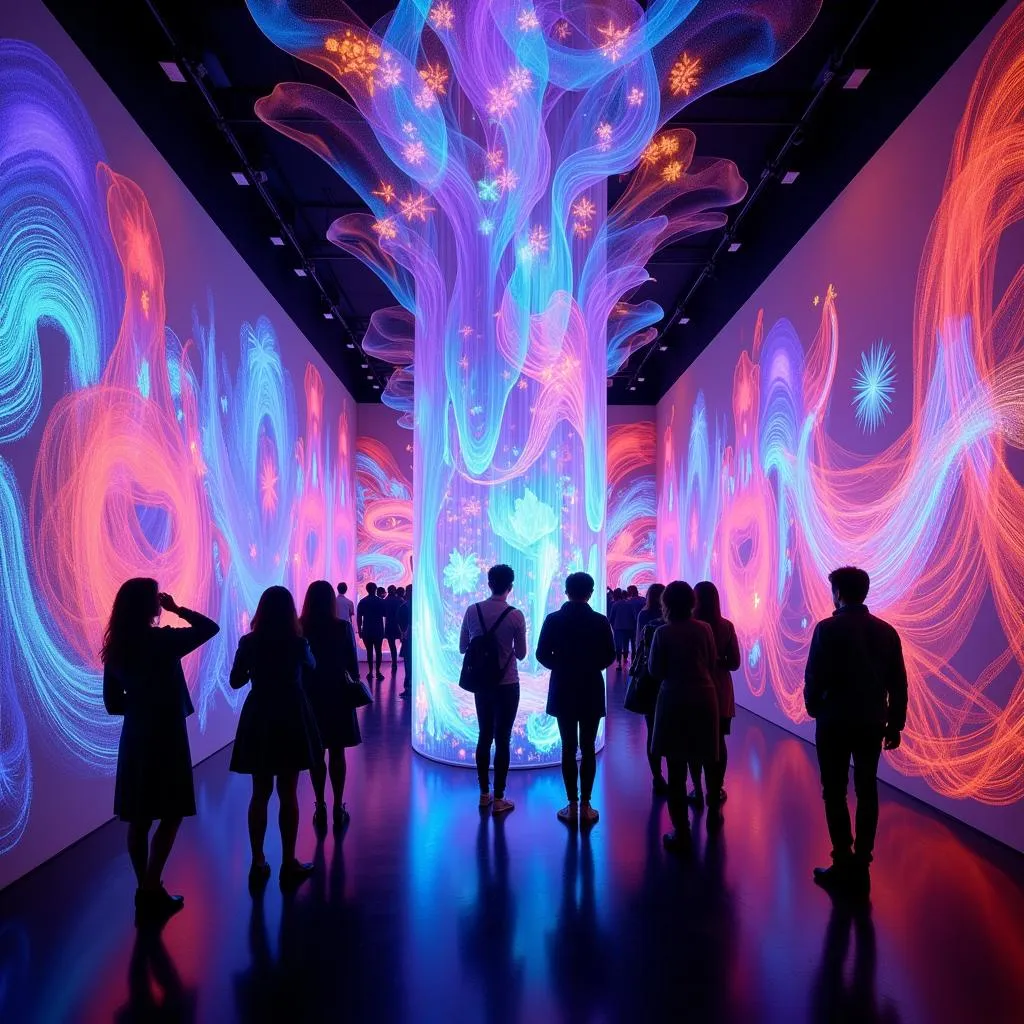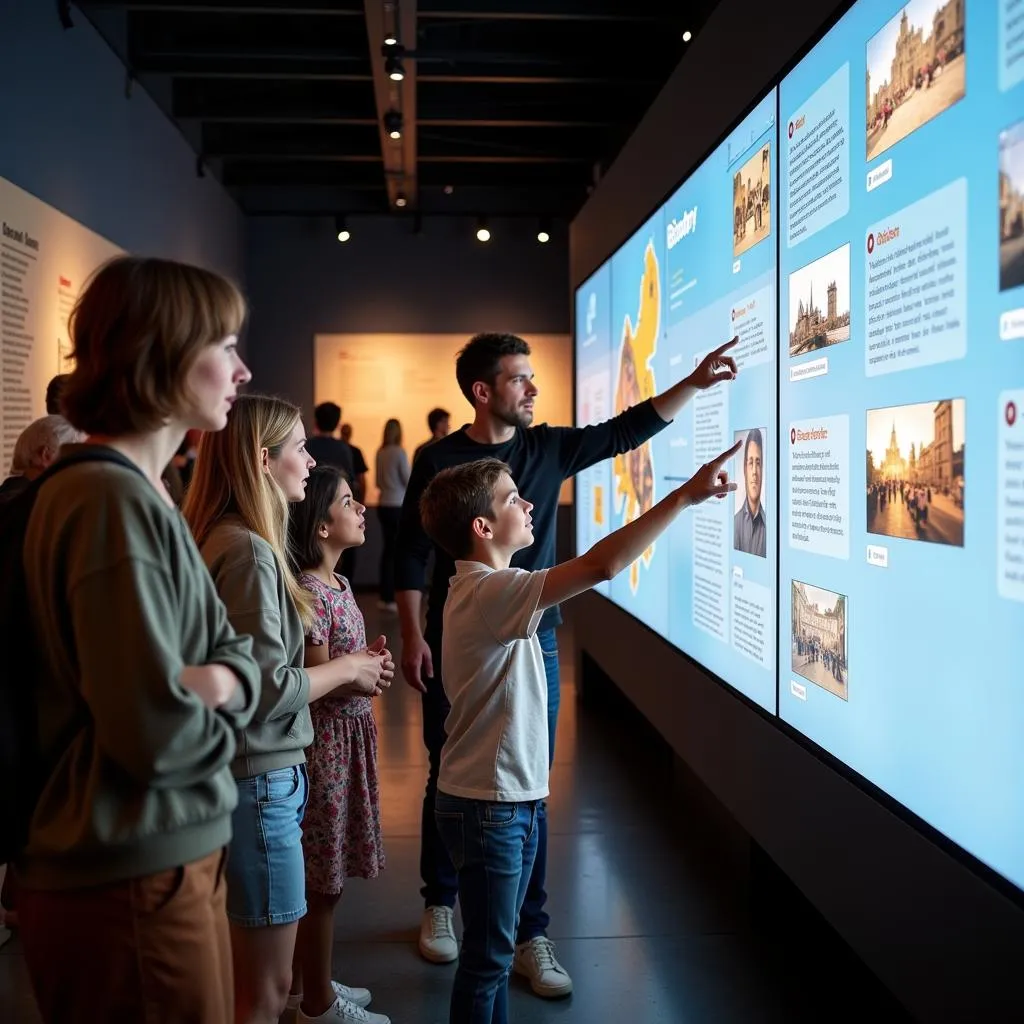In the realm of IELTS Speaking, discussing a museum you’d like to visit is a popular topic that often appears in various forms. This subject allows candidates to showcase their language skills while expressing personal interests and cultural appreciation. Let’s explore how to effectively tackle this topic and maximize your speaking score.
Describe an expensive activity you enjoy occasionally can be related to visiting museums, especially if you enjoy traveling to see world-renowned exhibitions. Now, let’s dive into the specifics of describing a museum you’d like to visit in the future.
Part 1: Introduction and Interview
In this section, the examiner may ask general questions about museums. Here are some potential questions and sample answers:
- Do you enjoy visiting museums?
Sample answer (Band 7-8):
“Absolutely! I find museums fascinating as they offer a unique glimpse into history, art, and culture. I particularly enjoy interactive exhibits that allow visitors to engage with the content more deeply.”
- What was the last museum you visited?
Sample answer (Band 8-9):
“The last museum I visited was the National Museum of Modern and Contemporary Art in Seoul. It was a thought-provoking experience as the exhibits challenged my perceptions of art and society. I was particularly captivated by the multimedia installations that blended technology with traditional art forms.”
Part 2: Long Turn
Here’s a sample cue card related to the topic:
Describe A Museum That You Would Like To Visit In The Future.
You should say:
- What kind of museum it is
- Where it is located
- What you expect to see there
- And explain why you want to visit this museum
Sample answer (Band 8-9):
“I’ve always been fascinated by the intersection of art and technology, which is why I’m eagerly anticipating a visit to the teamLab Borderless museum in Tokyo, Japan. This cutting-edge digital art museum is renowned for its immersive and interactive installations that blur the lines between the viewer and the artwork.
Located in the Odaiba area of Tokyo, teamLab Borderless is housed in a massive, purpose-built space that allows for large-scale digital projections and installations. What sets it apart from traditional museums is its ever-changing nature – the artworks are in constant flux, responding to visitors’ movements and interacting with other pieces.
I expect to be overwhelmed by a sensory extravaganza of light, color, and sound. From what I’ve read, visitors can wander through ethereal landscapes of floating lanterns, wade through cascading waterfalls of light, and even contribute to the creation of digital art pieces. I’m particularly excited about the prospect of experiencing the ‘Forest of Resonating Lamps,’ where thousands of suspended lamps change color in response to human presence.
The reason I’m so keen on visiting this museum is that it represents the cutting edge of artistic expression in the digital age. It’s not just about observing art; it’s about being immersed in it and becoming part of the artwork itself. This aligns perfectly with my interest in how technology can enhance and transform our experiences of art and culture. Moreover, as someone who works in the tech industry, I’m curious to see how advanced projection mapping and interactive technologies can create such mesmerizing environments.
In essence, visiting teamLab Borderless would be more than just a museum trip – it would be an exploration of the future of art and human-technology interaction, an experience that I believe will be both awe-inspiring and thought-provoking.”
 TeamLab Borderless Museum in Tokyo
TeamLab Borderless Museum in Tokyo
Bullet point questions:
- How do you think this museum differs from traditional art museums?
Sample answer (Band 8-9):
“The key difference lies in its interactive and immersive nature. Unlike traditional museums where art is typically static and visitors are passive observers, teamLab Borderless encourages active participation. The artworks are dynamic, responding to visitors’ presence and evolving over time. This creates a uniquely personal experience for each visitor, as their actions directly influence the art they’re experiencing.”
- Do you think virtual reality could replace physical museums in the future?
Sample answer (Band 7-8):
“While virtual reality certainly has the potential to offer immersive experiences, I don’t believe it will entirely replace physical museums. There’s something irreplaceable about the tangible presence of artworks and artifacts. However, VR could complement traditional museums, offering enhanced accessibility and allowing people to explore exhibitions remotely. It might also enable museums to create innovative, hybrid experiences that blend physical and virtual elements.”
Part 3: Two-way Discussion
- Examiner: How do museums contribute to a society’s cultural identity?
Sample answer (Band 8-9):
“Museums play a pivotal role in shaping and preserving a society’s cultural identity. They serve as repositories of collective memory, housing artifacts and artworks that encapsulate the essence of a culture’s history, values, and artistic expressions. By curating and contextualizing these items, museums help narrativize a society’s journey through time, highlighting significant moments and cultural shifts.
Moreover, museums act as educational institutions, fostering a deeper understanding and appreciation of cultural heritage among both locals and visitors. They provide a space for critical reflection on societal issues, often challenging prevailing narratives and encouraging dialogue about identity, history, and social progress.
In multicultural societies, museums can serve as platforms for intercultural exchange, promoting understanding and appreciation of diverse traditions. They can also play a role in reconciliation processes, addressing historical injustices and fostering empathy between different communities.
Furthermore, by showcasing a society’s artistic and scientific achievements, museums bolster national pride and inspire future generations to contribute to their cultural legacy. They also attract tourism, which not only boosts the economy but also facilitates cultural diplomacy on an international scale.
In essence, museums are not just custodians of the past; they are active shapers of cultural identity, constantly reinterpreting and presenting a society’s heritage in ways that resonate with contemporary audiences and contribute to ongoing cultural dialogues.”
- Examiner: Do you think governments should provide free access to museums?
Sample answer (Band 7-8):
“This is a complex issue with valid arguments on both sides. On one hand, providing free access to museums could significantly increase public engagement with culture and history. It would remove financial barriers, making these educational resources available to all segments of society, regardless of their economic status. This could lead to a more culturally literate and historically aware population, which is beneficial for society as a whole.
However, we must also consider the financial implications. Museums require substantial funding for maintenance, acquisitions, and special exhibitions. Without entry fees, they would become more reliant on government funding or private donations, which could potentially compromise their independence or limit their ability to expand and innovate.
A possible middle ground could be to offer free entry on certain days or for specific groups, such as students or seniors, while maintaining regular admission fees for others. This approach is already implemented in some countries and seems to strike a balance between accessibility and financial sustainability.
Ultimately, I believe that while complete free access might not be feasible for all museums, governments should strive to make these cultural institutions as accessible as possible, perhaps through subsidized tickets or increased funding for educational programs. The goal should be to ensure that financial constraints don’t prevent anyone from experiencing and learning from our cultural heritage.”
Describe a place you go to for a day trip could also include visiting a museum, especially if it’s located in a nearby city or town.
Key Vocabulary and Phrases for High Scores
Immersive /ɪˈmɜːrsɪv/ (adjective): Providing, involving, or characterized by deep absorption or immersion in something.
Example: “The museum offers an immersive experience that transports visitors to different historical periods.”Curate /kjʊəˈreɪt/ (verb): To select, organize, and look after the items in a collection or exhibition.
Example: “The exhibition was expertly curated to showcase the evolution of modern art.”Artifact /ˈɑːrtɪfækt/ (noun): An object made by a human being, typically one of cultural or historical interest.
Example: “The museum houses numerous artifacts from ancient civilizations.”Interactive /ˌɪntərˈæktɪv/ (adjective): Allowing a two-way flow of information between a computer and a computer-user; responding to a user’s input.
Example: “The science museum features many interactive exhibits that engage visitors of all ages.”Thought-provoking /ˈθɔːt prəˌvoʊkɪŋ/ (adjective): Stimulating careful consideration or attention.
Example: “The contemporary art installation was thought-provoking, challenging visitors’ perceptions of reality.”
 Interactive Museum Exhibit
Interactive Museum Exhibit
Examiner’s Advice
To achieve a high score in the IELTS Speaking test when discussing museums:
Expand your vocabulary: Use a wide range of topic-specific words and phrases related to art, history, and culture.
Provide detailed responses: Don’t just list facts; explain your thoughts and feelings about the museum or exhibits you’re describing.
Use advanced grammatical structures: Incorporate complex sentences and a variety of tenses to demonstrate your language proficiency.
Show enthusiasm: Express genuine interest in the topic through your tone and choice of words.
Make cultural connections: Relate the museum or its contents to broader cultural or historical contexts.
Practice fluency: Aim for smooth delivery without long pauses or hesitations.
Be prepared to elaborate: Have additional information ready in case the examiner asks follow-up questions.
Remember, the key to success in IELTS Speaking is not just about what you say, but how you say it. Confidence, fluency, and the ability to express complex ideas clearly are all crucial factors in achieving a high score.
Describe a time when you did something exciting could potentially involve a memorable museum visit that left a lasting impression on you.

